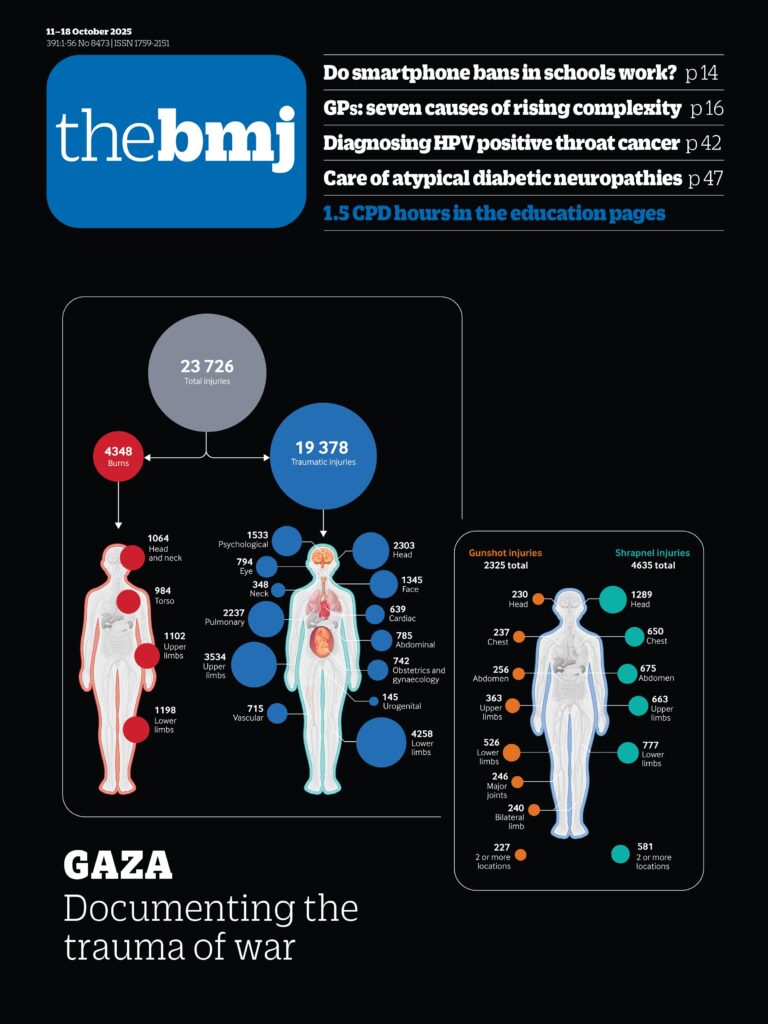- Jackie Leach Scully, professor of bioethics1
Although the report fails to acknowledge the nuances of surrogacy, the call for more data is welcome, writes Jackie Leach Scully
The report on surrogacy presented to the United Nations General Assembly in October by special rapporteur Reem Alsalem concludes that “The practice of surrogacy is characterized by exploitation and violence against women and children, including girls”.1 Its key recommendation is to eradicate all forms of surrogacy around the world. Alsalem’s report has, predictably, prompted highly polarised responses, with some commentators welcoming its conclusions, and others responding with outrage.234
Two things need to be said here. Firstly, Alsalem is the UN special rapporteur on violence against women and girls, and the report is entitled “The different manifestations of violence against women and girls in the context of surrogacy.” The report therefore takes a particular viewpoint and is not intended as an objective survey of the global surrogacy landscape. Secondly, although the special rapporteur can make recommendations, the UN is under no obligation to accept them. This report is therefore a prompt for discussion more than anything else.
Notwithstanding its lack of objectivity, the report does several valuable things. Alsalem calls for clear and respectful language, avoiding euphemisms such as “gestational carriers,” to reinforce the fact that it is women who are surrogates. She reminds us of the sheer economic scale of the global surrogacy business. With the market predicted to be worth almost $100bn (£75bn; €85bn) by 2033, a lot of money is being made by commercial surrogacy. In commercial surrogacy, the commissioning parents usually have higher incomes than the surrogates. This asymmetry inevitably carries a high risk of exploitation of women made vulnerable through poverty, lack of independence or education, or disability.
The report also highlights the immense variation in the international regulation of commercial and altruistic surrogacy. Legislation ranges from total prohibition, through legal recognition and various regulatory arrangements, to partial or complete absence of regulation. Such legislation covers not only surrogacy arrangements themselves, but also the legal status of the child, the surrogate, and the commissioning parent(s), including parentage and citizenship. In cross border surrogacy, the incompatibility of different countries’ laws is frequently problematic.
Yet from an ethical point of view, the report feels frustratingly like a missed opportunity. Its conclusion—a total global ban on any form of surrogacy—has no hope of success. Surrogacy has historically been with us for far too long and people whose families have been happily made through it will passionately, and legitimately, resist attempts to stop it. As a recommendation it also fails completely to acknowledge that surrogacy is a differentiated range of practices with highly variable and nuanced consequences and outcomes.
From an ethical perspective, a total ban is not justifiable. The available evidence suggests that surrogacy, when properly regulated, can be managed in ways that are safe, not exploitative, and do not cause material or psychological harm.56 But it is equally incontestable that there are places and circumstances where reproductive surrogacy is a form of violence towards women, their capacity for reproduction, their bodies, and their rights.
In such a complex and conflicted situation, the most ethical response is to work towards regulation (and effective implementation) that supports the benefits of surrogacy while curtailing its abuses. This requires more data than we currently have. There is a dire lack of reliable information about surrogacy practices to inform policy and regulation, particularly in low and middle income countries. For obvious reasons, it is near impossible to research surrogacy practices in countries where it is officially illegal, but extensive knowledge gaps exist for other reasons too, including the reluctance to examine an area considered private or even shameful. Alsalem’s final recommendation, that we should “Systematically gather disaggregated data related to surrogacy,” is one that we should all unite to endorse.
But alongside improving our empirical knowledge of surrogacy practices, Alsalem’s report should also be taken as a call to re-examine some of the basics of surrogacy, first considered in the late twentieth century. Surrogacy now exists in a different medical-technological and cultural landscape, and we need to ask ourselves some challenging questions about surrogacy today. Here’s one for starters: If we agree that at least some aspects of surrogacy, in some parts of the world, constitute violence against women, then does the apparent systemic lack of interest in gathering solid data on abusive practices indicate an underlying willingness to trade the wellbeing of women for the sake of family making?
Footnotes
-
Competing interests: None declared.
-
Provenance and peer review: Commissioned, not externally peer reviewed.

